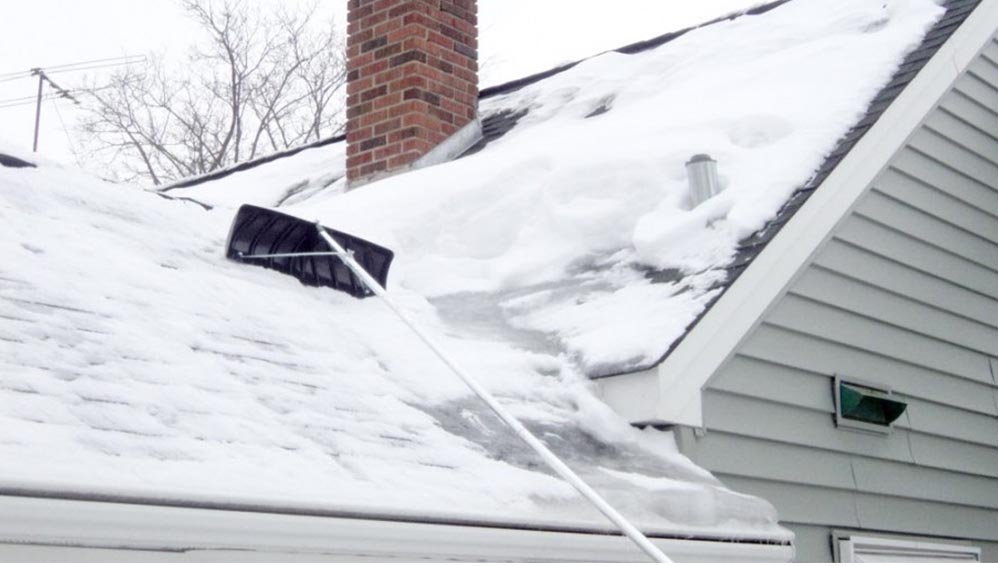An ice dam is a mass of ice that forms at the edge of a roof and prevents melting snow and water from draining off the roof. The water that backs up behind the dam can than leak into a home causing damage to walls, ceilings, and insulation.
An ice dam can be caused by heat loss from the house, snow cover on the roof, and outside temperatures. When the temperature at the higher levels of the roof’s outside surface reach above 32 degrees F, snow on the roof surface will melt. As the water flows downward, it reaches the lower level of the roof where the temperature may still be below 32 degrees so it can freeze and cause an ice dam to form. The dam grows as more melting snow flows down the roof until the water begins to back up behind the ice dam. This water finds cracks and openings in the exterior roof covering and flows into the attic space. From the attic, it can flow into the exterior walls or through the ceiling insulation and stain the ceiling.
Here are a few things you can do to help prevent ice dams from forming on your roof:
1. Use a roof rake to remove snow from the roof.
2. In an emergency, where water is already flowing into the house, chipping channels through the ice dam allows the water behind the dam to drain off the roof. On a warm day, a hose with warm tap water could also help open up channels. Avoid standing on the ground while chipping away at the ice as this can damage your roof or cause an injury due to falling ice.
3. Place heating cables in a zig-zag pattern on your roof. Contact a professional roofing contractor for help.
4. Install ice shields along the edges of the roof or use a roof de-icing system.
5. Keep your attic well ventilated. Natural roof ventilation can help maintain uniform roof temperatures. If the attic is warmer than 32 degrees in the winter, heat loss through the sheathing will melt the snow on the roof.
6. Keep the attic floors well insulated to minimize the amount of heat rising through the attic from within the house, but make sure the attic insulation isn’t blocking the roof ventilation.
7. Clean leaves and other debris from the gutters before the first snow. This will help prevent ice buildup in the gutters. Also make sure drains and downspouts are free of debris and have proper flowage.
8. Check ridge or soffit vents to be sure they’re not plugged by snow or debris.

